In today’s globalized economy, the importance of efficient logistics can’t be overstated, especially for businesses looking to import goods from one of the largest manufacturing hubs in the world—China—to landlocked countries like Bolivia. Sea freight, or ocean freight, stands out as a cost-effective and reliable method for transporting large volumes of goods across vast distances. This article delves into the myriad benefits of utilizing sea freight for shipments from China to Bolivia, including its economic advantages, capacity for accommodating substantial shipments, environmental benefits, and a comprehensive guide to navigating the shipping process. Understanding these dynamics can empower Bolivian businesses to optimize their importing strategies and tap into the extensive range of products available in the Chinese market.
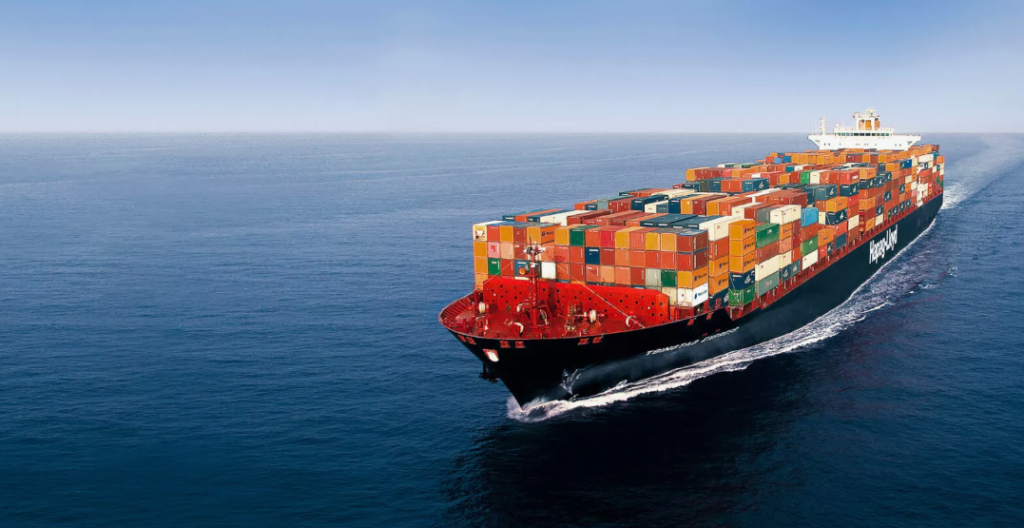
Understanding Sea Freight: A Comprehensive Overview
Sea freight, often referred to as ocean freight, involves the transportation of goods via shipping vessels across the world’s oceans. This method of transport is a crucial component of international trade, particularly for bulky and heavy items that are not time-sensitive. Sea freight operates primarily through container ships, which are used to load various types of cargo, from consumer goods to industrial machinery.
The process of sea freight encompasses several key stages:
- Booking: Importers and exporters negotiate terms and schedule shipments with freight forwarders.
- Loading: Goods are packed into containers, which are then loaded onto ships at port facilities.
- Transit: Ships travel across international waters, often taking several weeks to reach their destination.
- Unloading: Upon arrival, containers are unloaded and transported to their final destinations, often facilitated by local logistics providers.
The Importance of Sea Freight in Global Trade
Sea freight serves as a backbone of global commerce, accounting for approximately 80% of international trade by volume. Its significance lies in several critical factors:
-
Cost-Effectiveness: Compared to air freight, sea freight is generally more economical for transporting large quantities of goods. This cost advantage makes it an attractive option for businesses looking to optimize logistics costs. Freight rates can vary significantly based on destination, so it’s crucial for importers to consult reliable freight forwarders that provide a comprehensive price list and transparent pricing structures.
-
Capacity and Flexibility: Shipping vessels can carry a diverse range of products, including raw materials, finished goods, and oversized equipment. This flexibility allows businesses to scale operations according to demand while ensuring that high volumes of inventory can be transported efficiently.
-
Eco-Friendly: Shipping by sea has a lower carbon footprint compared to air transport. This environmental benefit is becoming increasingly important for businesses aiming to enhance their sustainability efforts and appeal to environmentally conscious consumers.
-
Global Reach: Sea freight connects countries across various continents, facilitating trade with markets that may not be accessible through other transportation methods. For example, the route from China to Bolivia allows Bolivian businesses to access a vast array of products, from electronics to textiles.
-
Reliability: Major shipping lines offer extensive schedules and routes, ensuring that goods are delivered consistently and predictably. While sea freight may take longer than air freight, the established timetables help businesses plan their operations and inventory levels effectively.
Why Choose Sea Freight from China to Bolivia?
Choosing sea freight from China to Bolivia is advantageous for several reasons. Bolivia, being a landlocked country, relies heavily on maritime trade routes to import goods. The following points highlight the benefits of utilizing sea freight for this specific route:
-
Access to Chinese Products: As one of the largest manufacturing hubs in the world, China provides a wide range of goods at competitive prices. By leveraging sea freight services, Bolivian traders can access everything from machinery to consumer electronics without incurring excessive shipping costs.
-
Customized Logistics Solutions: Freight forwarders like Dantful International Logistics offer tailored services, including customs clearance, warehouse services, and insurance services, ensuring a seamless shipping experience. This provider understands the complexities of shipping from China and can facilitate smooth transitions across different transport modalities.
-
Door-to-Door Shipping Services: Many freight forwarders now offer door-to-door shipping services, simplifying logistics for businesses in Bolivia. This service handles every aspect of the shipping process, from pickup at the supplier’s location in China to delivery at the final destination in Bolivia.
-
Evolving Trade Dynamics: With increasing trade agreements and economic partnerships, Bolivia’s trade relations with China are expanding. Utilizing sea freight can help Bolivian businesses take full advantage of this growing market.
In conclusion, understanding the fundamentals of sea freight is essential for businesses looking to optimize their importing strategies. The combination of cost-effectiveness, capacity, eco-friendliness, and global reach makes sea freight an indispensable choice for companies aiming to import goods from China to Bolivia. For a professional, cost-effective, and high-quality logistics experience, consider partnering with Dantful International Logistics to take advantage of our comprehensive services tailored to meet your needs.
Advantages of Sea Freight from China to Bolivia
Cost-Effective
Utilizing sea freight from China to Bolivia stands out for its cost efficiency, especially when transporting large volumes of goods. Compared to air freight, which is significantly more expensive, sea freight offers lower rates per unit of weight or volume. This is particularly beneficial for businesses importing bulk products such as construction materials or machinery, where shipping costs can significantly impact overall expenditure. By opting for sea freight, importers can save capital, allowing them to redirect funds towards other operational needs.
Accommodates Large Shipments
Sea freight is uniquely suited for transporting large shipments. Ships can carry thousands of containers simultaneously, making it the ideal choice for businesses that need to transport considerable quantities of goods. This capacity is particularly advantageous for industries like manufacturing, where raw materials or finished goods are frequently shipped in bulk. A freight forwarder can provide insights into optimal container sizes and configurations, ensuring that importers maximize their shipping potential.
Versatile Container Options
A significant benefit of sea freight is the variety of container options available to accommodate different types of cargo. Standard 20-foot or 40-foot containers can hold general cargo, while specialized containers, such as reefer containers for temperature-sensitive goods or flat-rack containers for oversized items, are also available. This versatility allows businesses to select the most appropriate shipping solution for their products. In addition, consolidated shipping options enable smaller shipments to share container space, reducing costs for those with lower shipping volumes.
Reliable Transit Times
While sea freight may take longer than air transport, it offers reliable transit times thanks to established shipping schedules and routes. Major shipping lines consistently adhere to departure and arrival timetables, allowing businesses to plan their inventory and production schedules accordingly. The predictability of transit times is crucial for maintaining supply chain continuity, especially when coordinating with local logistics and distribution networks in Bolivia.
Environmentally Friendly
With growing concerns about sustainability, sea freight is often regarded as a more environmentally friendly option compared to air freight. Ships generally produce fewer CO2 emissions per ton of cargo transported, making it a favorable choice for businesses seeking to minimize their carbon footprint. Importers can enhance their reputations by emphasizing sustainable sourcing and logistics practices, appealing to eco-conscious consumers in the marketplace.
Reduced Risk of Damage
The design and operation of container shipping significantly mitigate the risk of damage to goods during transit. Containers are robust and sealed, protecting products from external factors such as rain, humidity, and physical impact. Additionally, the efficiency of loading and unloading operations reduces the handling of individual items, which minimizes the potential for damage. For businesses importing delicate products, choosing sea freight can provide peace of mind and assurance of product integrity upon arrival.
READ MORE:
- Shipping From China to the United States
- Shipping From China TO Canada
- Shipping From China TO Mexico
- Shipping From China to Panama
- Shipping From China to Costa Rica
- Shipping From China to Brazil
- Shipping From China TO Colombia
- Shipping From China to Jamaica
- Shipping From China to Venezuela
The Process of Shipping via Sea Freight
Step-by-Step Guide to Sea Freight Shipping
Understanding the shipping process can streamline logistics and help businesses navigate the complexities of international trade. Below is a detailed step-by-step guide to shipping via sea freight:
-
Initial Consultation: Engage with a freight forwarder to discuss shipping requirements, including volume, type of goods, and desired timelines. A professional like Dantful International Logistics can provide tailored advice based on experience and expertise.
-
Quotation and Booking: The freight forwarder will provide a quote based on the specifics of the shipment. Once the terms are agreed upon, a booking is made with the shipping line for the designated vessel.
-
Preparation of Documentation: Prepare necessary shipping documents, including the bill of lading, commercial invoice, packing list, and any required customs documentation. The freight forwarder can assist in ensuring all documents comply with international regulations.
-
Cargo Pickup and Packaging: Arrange for the pickup of goods from the supplier in China. Proper packaging is crucial to minimize the risk of damage during transit; containers should be loaded efficiently and securely.
-
Customs Clearance: Upon arrival at the port, the goods will undergo customs clearance. Ensuring all documentation is accurate and complete will facilitate a smooth customs process. The freight forwarder can manage this on behalf of the importer.
-
Shipping and Transit: The cargo is loaded onto the vessel, and the estimated transit time will begin. The freight forwarder can provide updates on the shipment’s status throughout the journey.
-
Arrival and Unloading: Once the vessel arrives at the designated Bolivian port, the cargo is unloaded and transferred to the local customs authority for clearance.
-
Final Delivery: After customs clearance, the goods are delivered to the final destination, whether it be a warehouse or directly to the importer’s facility.
Choosing the Right Freight Forwarder
Selecting an experienced and reliable freight forwarder is vital for ensuring a smooth shipping process. Factors to consider when choosing a freight forwarder include:
Expertise in Specific Routes: Look for a freight forwarder with a proven track record of shipping from China to Bolivia. Their familiarity with the route can streamline logistics and improve efficiency.
-
Comprehensive Services: A forwarder that offers a range of services, including customs clearance, insurance services, and warehouse services, can simplify the shipping experience by acting as a single point of contact.
-
Transparent Pricing: Ensure that the freight forwarder provides clear and detailed pricing structures, including all potential fees associated with the shipping process.
-
Customer Support: Opt for a forwarder known for excellent customer service. Being able to receive timely updates and address concerns during shipping is crucial for peace of mind.
By understanding the advantages of sea freight and the shipping process, businesses can make informed decisions when importing goods from China to Bolivia, ultimately leading to successful international trade relationships. For expert guidance and tailored logistics solutions, consider partnering with Dantful International Logistics, a highly professional, cost-effective, and high-quality one-stop international logistics service provider for global traders.
Sea Freight Costs from China to Bolivia
Understanding the cost structure associated with sea freight from China to Bolivia is essential for businesses looking to import goods. The overall cost can vary based on several factors, including the type of cargo, volume, shipping method, and additional services required. Below are the primary components that contribute to the cost of sea freight.
Key Factors Influencing Sea Freight Costs
| Factor | Description |
|---|---|
| Shipping Method | Costs may differ between Full Container Load (FCL) and Less than Container Load (LCL) shipping. FCL is generally more economical for large shipments, while LCL is ideal for smaller loads. |
| Container Type | The type of container used (standard, refrigerated, flat-rack) influences costs due to varying rental rates and handling fees. |
| Distance and Route | The distance between the ports, shipping line routes, and port fees can affect the overall cost. |
| Customs Duties and Taxes | Import duties and taxes imposed by Bolivian authorities will add to the total expense of shipping goods. |
| Insurance Coverage | Opting for insurance services to protect against cargo loss or damage can increase shipping costs but is often recommended for high-value items. |
| Additional Services | Services such as customs clearance, warehouse services, and door-to-door shipping can add to the overall cost but may provide significant convenience for importers. |
Estimated Cost Overview
The following table provides estimated costs for shipping from various major Chinese ports to Bolivia. These figures are illustrative and can fluctuate based on market conditions, shipping line, and specific shipment requirements.
| Port of Origin | Cost (FCL 20′) | Cost (FCL 40′) | Cost (LCL – per CBM) | Estimated Duties (approx.) |
|---|---|---|---|---|
| Shanghai | $1,500 | $2,800 | $120 | 25% of CIF value |
| Shenzhen | $1,600 | $2,900 | $130 | 25% of CIF value |
| Ningbo | $1,550 | $2,850 | $125 | 25% of CIF value |
| Guangzhou | $1,700 | $3,000 | $135 | 25% of CIF value |
Sea Freight Transit Times from China to Bolivia
Transit times for sea freight shipments from China to Bolivia can vary significantly based on several factors, including the specific ports used, shipping routes, and weather conditions. Understanding these transit times is crucial for businesses to manage inventory and meet customer expectations.
Typical Transit Times
Below is an overview of the typical transit times from various major ports in China to the main port in Bolivia (Puerto de Ilo):
| Port of Departure | Estimated Transit Time to Puerto de Ilo (days) |
|---|---|
| Shanghai | 30 – 35 |
| Shenzhen | 30 – 35 |
| Ningbo | 32 – 37 |
| Guangzhou | 32 – 37 |
Factors Affecting Transit Times
-
Port Congestion: High traffic at ports can lead to delays. It is essential to account for potential congestion, especially during peak shipping seasons.
-
Shipping Line Schedule: Different shipping lines have varying schedules, which can impact the overall transit time. Some may offer more direct routes, while others may have multiple stops.
-
Customs Clearance: The time taken for customs clearance upon arrival in Bolivia can significantly affect the total transit time. Ensuring all documentation is prepared accurately can help expedite this process.
-
Weather Conditions: Adverse weather can lead to delays, particularly during storm seasons. It’s advisable to monitor weather forecasts and work with freight forwarders who have contingency plans in place.
-
Final Delivery: After the cargo arrives at the port, the time taken for final delivery to the destination in Bolivia must also be considered, which may include additional logistics services such as local transportation.
By effectively managing costs and understanding transit timelines, businesses can optimize their shipping strategies and improve supply chain efficiency when importing goods from China to Bolivia. For personalized assistance with logistics planning and execution, consider engaging with Dantful International Logistics, a proficient and reliable partner in international freight forwarding.
Challenges and Solutions in Sea Freight Logistics
Despite the numerous advantages of sea freight from China to Bolivia, various challenges can arise during the logistics process. Understanding these challenges and implementing effective solutions is essential for businesses looking to streamline their shipping operations.
Common Challenges in Sea Freight Logistics
-
Customs Regulations
Navigating the complex customs regulations of both China and Bolivia can be daunting. Frequent changes in tariffs and trade policies add to the uncertainty.Solution: Partnering with experienced freight forwarders like Dantful International Logistics can help. They offer customs clearance services and keep up-to-date with changing regulations, ensuring that all documentation is accurate and compliant to avoid unnecessary delays.
-
Transit Delays
Unexpected delays can occur due to port congestion, weather conditions, or mechanical issues with vessels. These can lead to disruptions in supply chains.Solution: Utilizing real-time tracking technology can provide visibility into the shipment status, enabling businesses to respond promptly to any delays and make contingency plans accordingly.
-
Cargo Damage and Loss
The risk of damage or loss of cargo during transport is a significant concern. Factors such as improper handling, adverse weather, and inadequate packaging can contribute to these issues.Solution: Implementing strict packaging protocols and opting for insurance services can mitigate these risks. Ensuring that cargo is adequately packed and inspected before shipping can also minimize potential losses.
-
High Freight Costs
Fluctuations in freight rates can make budgeting difficult for importers. Rising fuel prices and shipping demand can lead to increased shipping costs.Solution: Regularly comparing quotes from multiple freight providers can help businesses find competitive rates. Utilizing the services of Dantful allows for customized logistics solutions that can be tailored to meet budgetary constraints.
-
Limited Availability of Shipping Options
Depending on the shipping line and route, there may be limited options for transit timelines or container types, which could affect scheduling.Solution: Establishing long-term relationships with reliable freight forwarders can provide access to a broader range of shipping options and flexibility in scheduling, thus enhancing logistics efficiency.
-
Complexity of Logistics Coordination
Coordinating logistics across multiple providers can be challenging, especially when dealing with different transportation modes.Solution: Using a single freight forwarder that offers integrated services—from warehouse services to door-to-door shipping—can streamline the logistics coordination process and improve efficiency.
Future Trends in Sea Freight from China to Bolivia
The landscape of sea freight logistics is evolving rapidly, driven by technological advancements, changing consumer demands, and global economic shifts. Understanding these trends can help businesses adapt their strategies for continued success.
The Impact of Technology on Sea Freight Efficiency
- Digitalization of Processes
The logistics industry is undergoing significant digital transformation. Technologies such as Artificial Intelligence (AI), cloud computing, and big data analytics are being integrated into shipping operations to enhance efficiency.- Benefits: These technologies facilitate better data analysis for demand forecasting, optimize routing, and improve inventory management. Enhanced tracking systems provide real-time visibility into shipments, empowering businesses to make informed decisions.
- Automation and Robotics
Automation in ports and warehouses is on the rise, with robots handling repetitive tasks such as unloading containers and sorting shipments.- Benefits: Automation reduces human error, speeds up operations, and decreases operational costs. This can lead to faster turnaround times and increased capacity to handle larger shipments.
- Blockchain Technology
Blockchain is emerging as a secure method for managing transactions and documentation in the shipping process. Its decentralized nature enhances transparency and traceability throughout the supply chain.- Benefits: Utilizing blockchain can simplify customs processes, reduce fraud, and enhance trust among trading partners, ultimately leading to smoother shipping experiences.
Predictions for Sea Freight Growth
- Increased Trade Volume
With Bolivia’s expanding trade relations with China, the volume of goods transported via sea freight is expected to increase significantly in the coming years. Economic partnerships and trade agreements will further drive this growth.- Implications: Businesses should prepare for increased shipping demands by optimizing their logistics strategies and ensuring they have reliable freight partners in place.
- Sustainability Initiatives
The logistics industry is placing greater emphasis on sustainability as environmental concerns grow. Companies are likely to invest in greener shipping practices and technologies, such as eco-friendly vessels and sustainable packaging.- Implications: Businesses that adopt sustainable practices may gain a competitive edge in the market, enhancing their reputation and appealing to environmentally conscious consumers.
- Shifts in Consumer Behavior
The rise of e-commerce and changing consumer preferences for faster delivery times will influence shipping strategies. Companies will need to adapt to these changing expectations by offering more efficient delivery options.- Implications: Businesses may explore hybrid shipping models that combine sea freight with faster transport options, such as air freight, to meet consumer demands without sacrificing cost efficiency.
- Enhanced Focus on Resilience
Recent global disruptions, such as the COVID-19 pandemic, have highlighted the need for resilient supply chains. Companies are likely to reevaluate their logistics strategies to build more robust systems capable of withstanding future shocks.- Implications: This may involve diversifying shipping routes, investing in alternative logistics solutions, and employing technology to enhance flexibility and responsiveness.
By staying abreast of these trends and challenges, businesses can navigate the evolving landscape of sea freight logistics more effectively, ensuring they remain competitive in the dynamic market of international trade. For businesses looking to leverage these trends and optimize their logistics, partnering with Dantful International Logistics provides a comprehensive suite of services tailored to meet the unique needs of global traders.
Frequently Asked Questions (FAQs)
1. What is sea freight and how does it work?
Sea freight or ocean freight involves transporting goods via shipping vessels across oceans. The process includes booking shipments, loading goods into containers, transit across international waters, and unloading at the destination port. Companies, especially freight forwarders like Dantful International Logistics, assist businesses in managing this process efficiently.
2. Why should I choose sea freight over air freight for shipping from China to Bolivia?
Sea freight is generally more cost-effective than air freight, especially for large shipments. It accommodates bulky and heavy goods, has a lower carbon footprint, and offers reliable transit times. This makes it suitable for businesses that do not require immediate delivery of their products.
3. What are the benefits of using Dantful International Logistics for sea freight?
Dantful provides a highly professional, cost-effective, and high-quality service, including customs clearance, warehouse services, insurance services, and door-to-door shipping. Their expertise in the logistics industry simplifies the shipping process from China to Bolivia, ensuring timely and efficient delivery.
4. How long does it take to ship goods from China to Bolivia via sea freight?
Typical transit times from major Chinese ports to Bolivia (Puerto de Ilo) range from 30 to 37 days, depending on the port of departure and other factors such as weather conditions and port congestion.
5. What factors affect sea freight costs?
Factors influencing sea freight costs include the shipping method (FCL vs. LCL), container type, distance and route, customs duties, and additional services such as insurance and warehousing. Working with a knowledgeable freight forwarder can help businesses navigate these cost variables effectively.
6. What are the common challenges in sea freight logistics?
Common challenges include navigating complex customs regulations, potential transit delays, cargo damage or loss, high freight costs, limited shipping options, and the complexity of logistics coordination. Partnering with experienced freight forwarders can help mitigate these challenges.
7. How can businesses ensure the safety of their cargo during transit?
To reduce the risk of cargo damage or loss, businesses should implement strict packaging protocols, properly load containers, and consider opting for insurance services to cover potential mishaps during transportation.
8. How can I get started with shipping from China to Bolivia?
Businesses should engage with a reliable freight forwarder like Dantful International Logistics for a consultation to discuss their shipping requirements. They can provide tailored advice, assist with documentation, and guide businesses through every step of the shipping process.

Young Chiu is a seasoned logistics expert with over 15 years of experience in international freight forwarding and supply chain management. As CEO of Dantful International Logistics, Young is dedicated to providing valuable insights and practical advice to businesses navigating the complexities of global shipping.


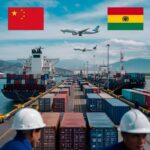
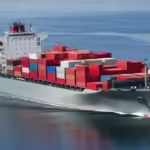
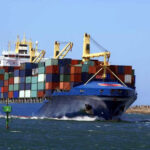


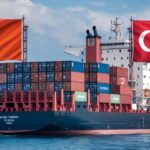
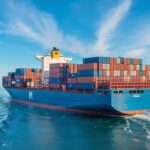

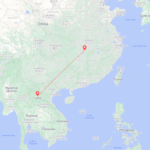
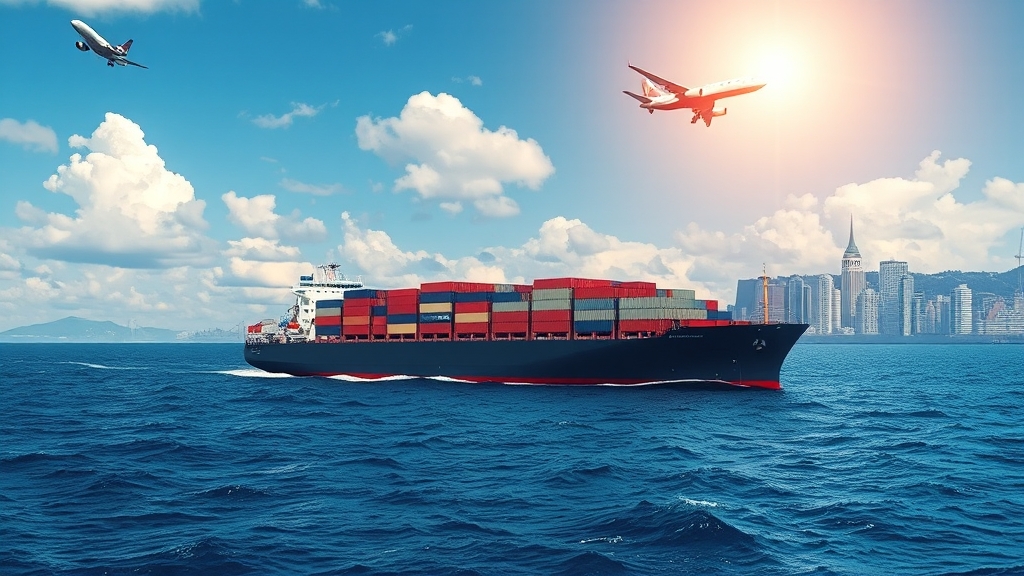

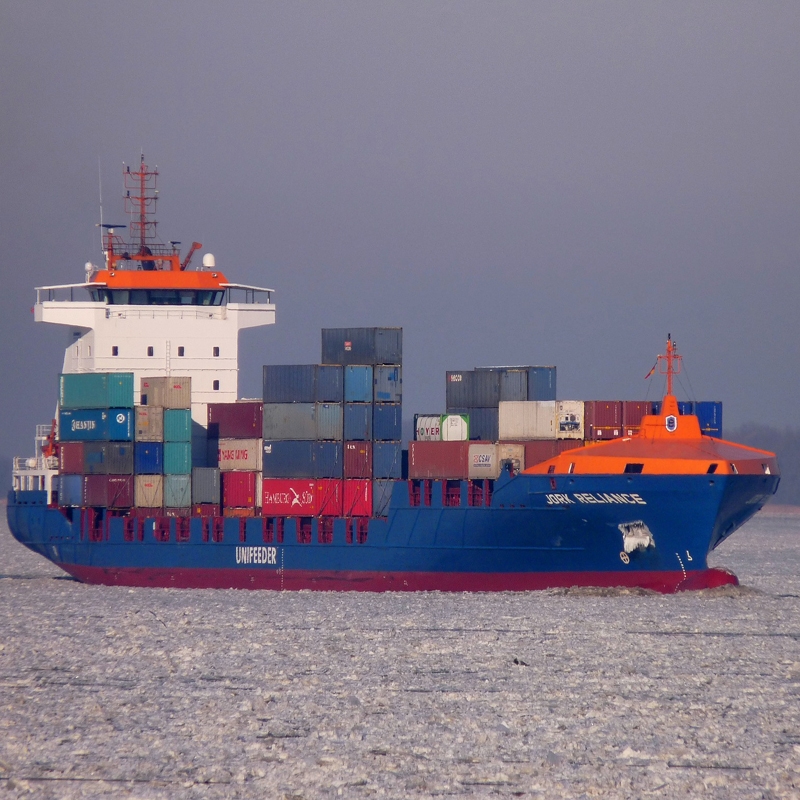
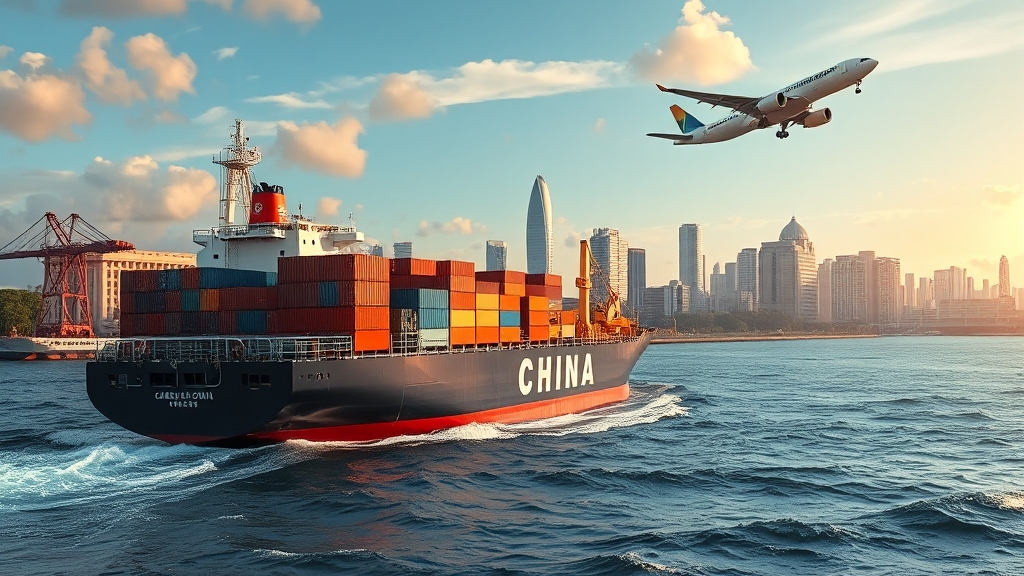
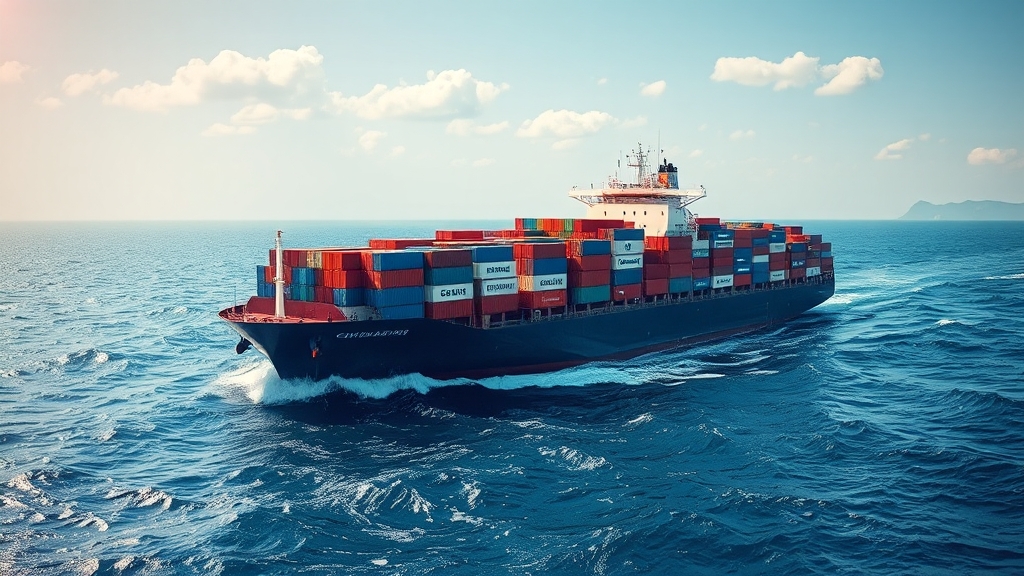





 Afrikaans
Afrikaans Shqip
Shqip አማርኛ
አማርኛ العربية
العربية Հայերեն
Հայերեն Azərbaycan dili
Azərbaycan dili Euskara
Euskara Беларуская мова
Беларуская мова বাংলা
বাংলা Bosanski
Bosanski Български
Български Català
Català Cebuano
Cebuano Chichewa
Chichewa 简体中文
简体中文 繁體中文
繁體中文 Corsu
Corsu Hrvatski
Hrvatski Čeština
Čeština Dansk
Dansk Nederlands
Nederlands English
English Esperanto
Esperanto Eesti
Eesti Filipino
Filipino Suomi
Suomi Français
Français Galego
Galego ქართული
ქართული Deutsch
Deutsch Ελληνικά
Ελληνικά Kreyol ayisyen
Kreyol ayisyen Harshen Hausa
Harshen Hausa Ōlelo Hawaiʻi
Ōlelo Hawaiʻi עִבְרִית
עִבְרִית हिन्दी
हिन्दी Hmong
Hmong Magyar
Magyar Íslenska
Íslenska Igbo
Igbo Bahasa Indonesia
Bahasa Indonesia Gaeilge
Gaeilge Italiano
Italiano 日本語
日本語 Basa Jawa
Basa Jawa ಕನ್ನಡ
ಕನ್ನಡ Қазақ тілі
Қазақ тілі ភាសាខ្មែរ
ភាសាខ្មែរ 한국어
한국어 كوردی
كوردی Кыргызча
Кыргызча ພາສາລາວ
ພາສາລາວ Latin
Latin Latviešu valoda
Latviešu valoda Lietuvių kalba
Lietuvių kalba Lëtzebuergesch
Lëtzebuergesch Македонски јазик
Македонски јазик Malagasy
Malagasy Bahasa Melayu
Bahasa Melayu മലയാളം
മലയാളം Maltese
Maltese Te Reo Māori
Te Reo Māori मराठी
मराठी Монгол
Монгол ဗမာစာ
ဗမာစာ नेपाली
नेपाली Norsk bokmål
Norsk bokmål پښتو
پښتو فارسی
فارسی Polski
Polski Português
Português ਪੰਜਾਬੀ
ਪੰਜਾਬੀ Română
Română Русский
Русский Samoan
Samoan Gàidhlig
Gàidhlig Српски језик
Српски језик Sesotho
Sesotho Shona
Shona سنڌي
سنڌي සිංහල
සිංහල Slovenčina
Slovenčina Slovenščina
Slovenščina Afsoomaali
Afsoomaali Español
Español Basa Sunda
Basa Sunda Kiswahili
Kiswahili Svenska
Svenska Тоҷикӣ
Тоҷикӣ தமிழ்
தமிழ் తెలుగు
తెలుగు ไทย
ไทย Türkçe
Türkçe Українська
Українська اردو
اردو O‘zbekcha
O‘zbekcha Tiếng Việt
Tiếng Việt Cymraeg
Cymraeg יידיש
יידיש Yorùbá
Yorùbá Zulu
Zulu